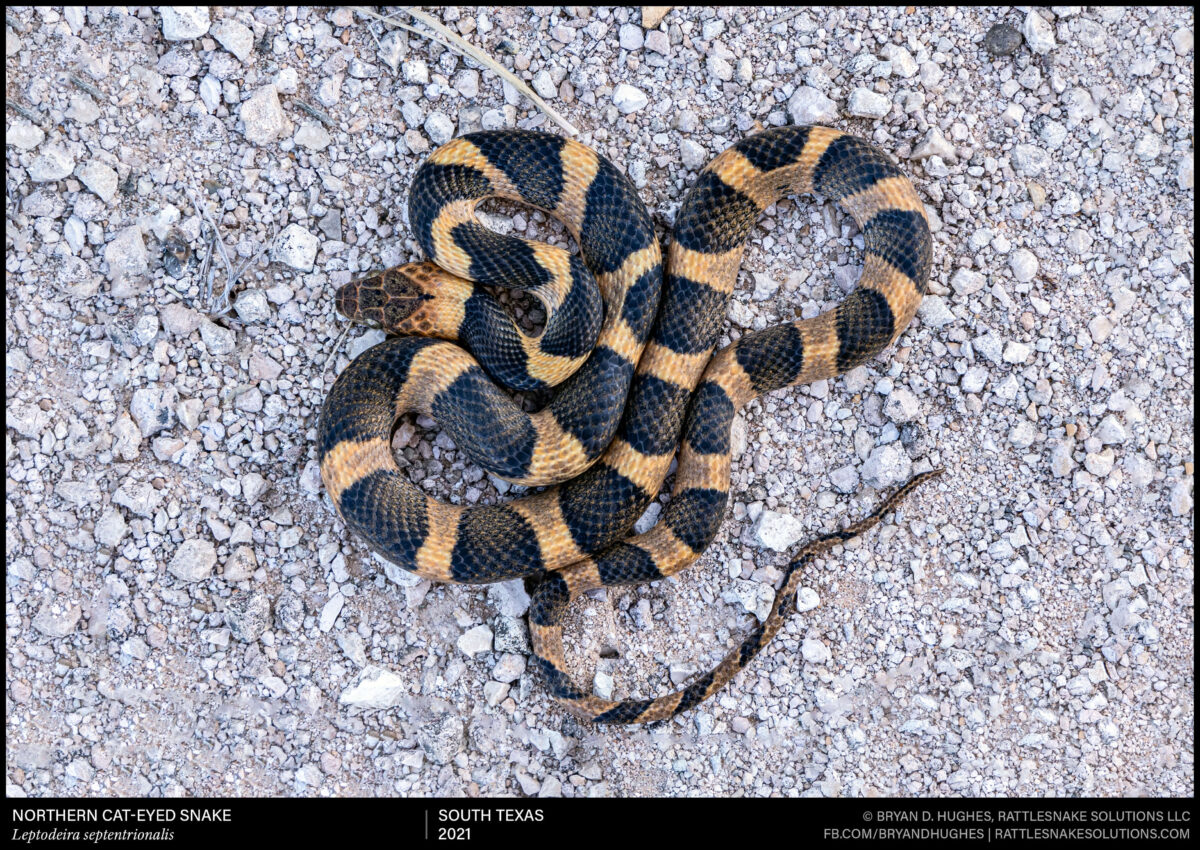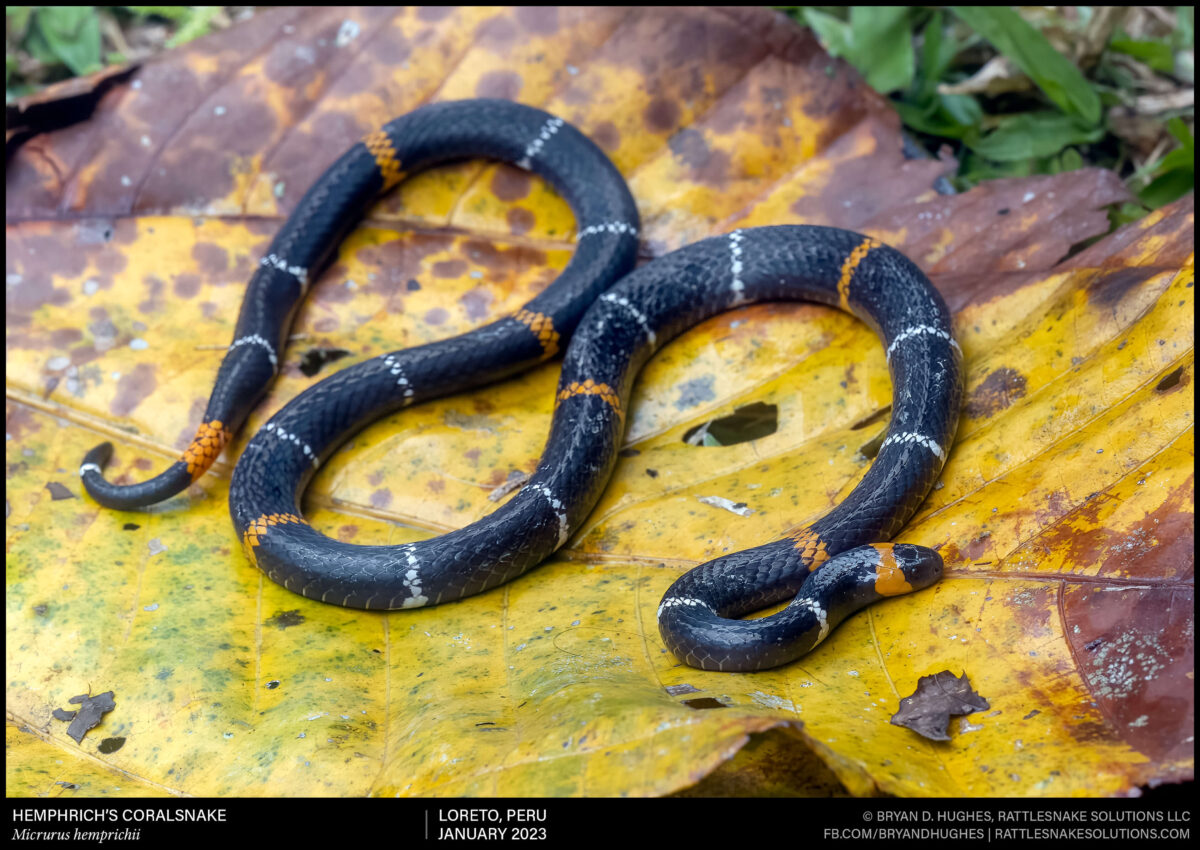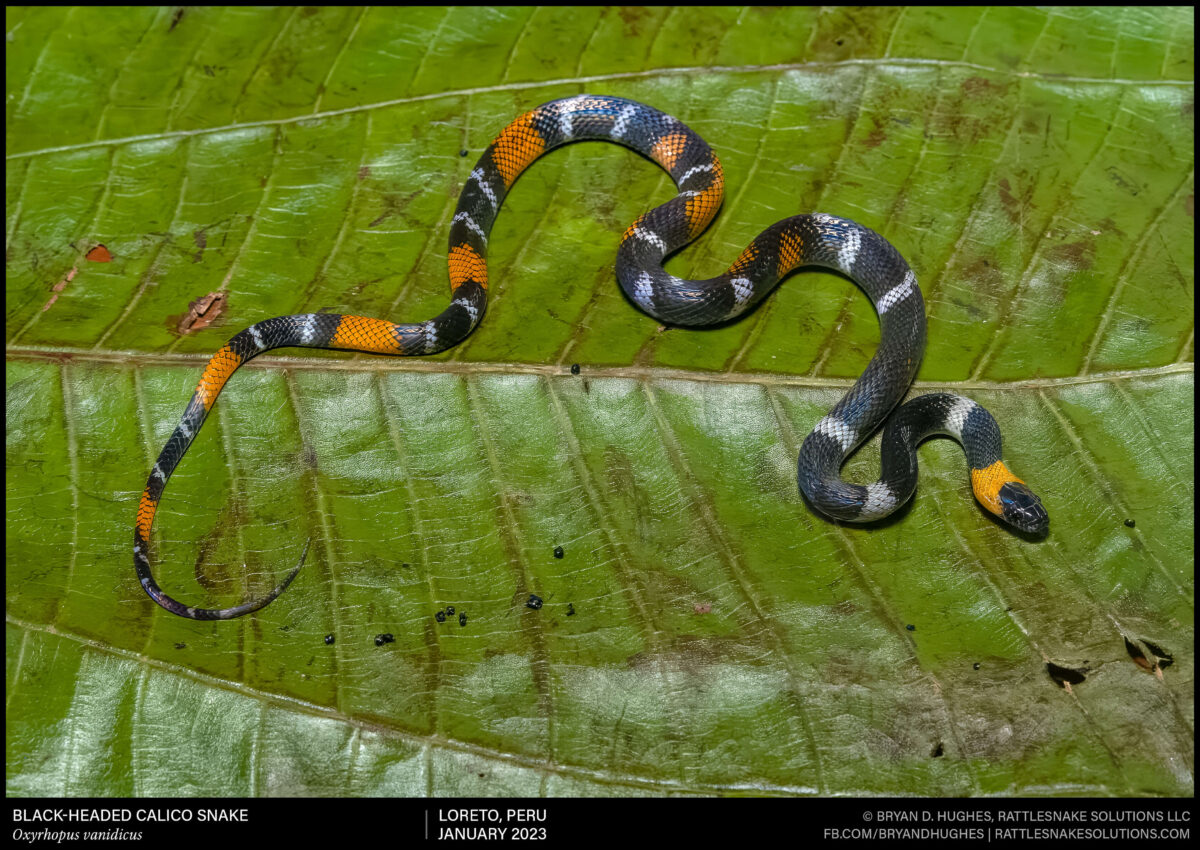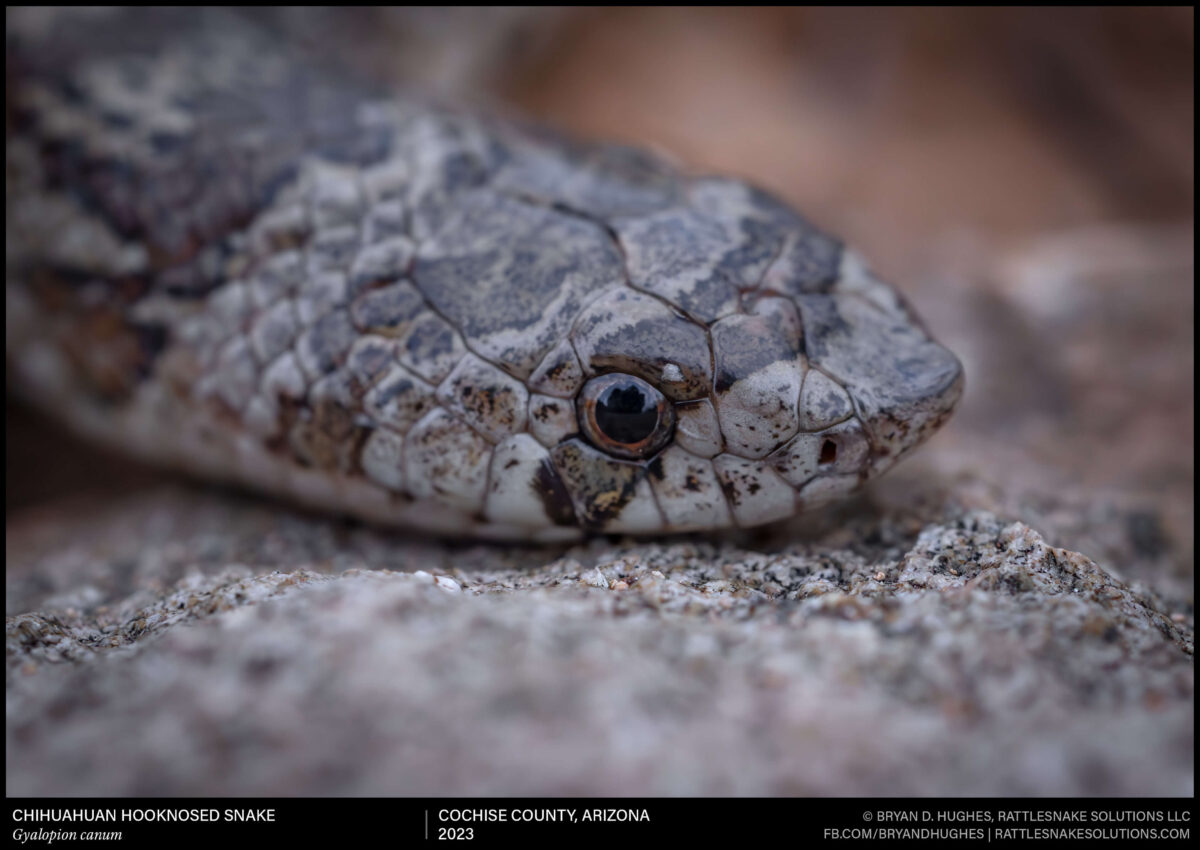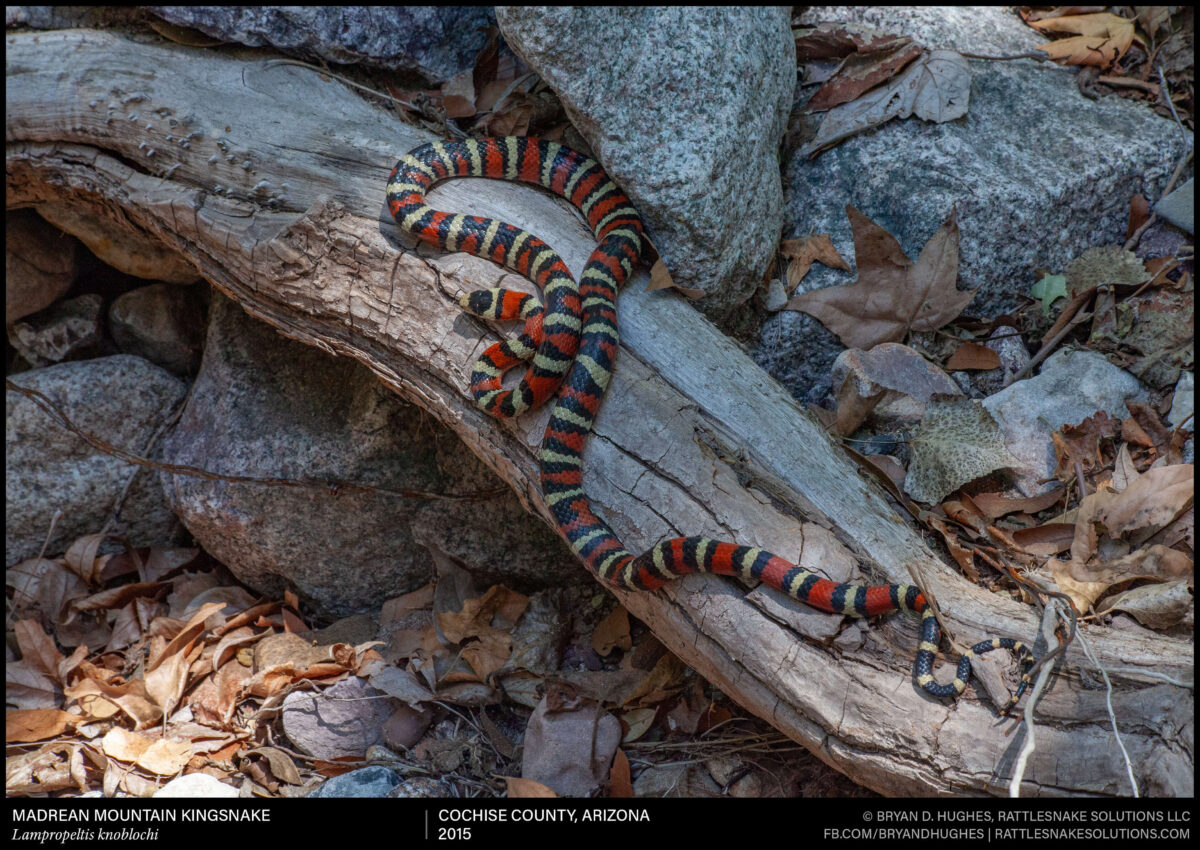A common sight around waterways south of the US are the cat-eyed snakes; mildly venomous, cat-eyed snakes (Leptodeira sp.). However, they do make it into the country in one small area of extreme south Texas. We found this Northern Cat-eyed Snake (Leptodeira septentrionalis) there several years ago. For friends in Arizona, these are most closely related to the nightsnakes (Hypsiglena sp.), both in form and lineage.
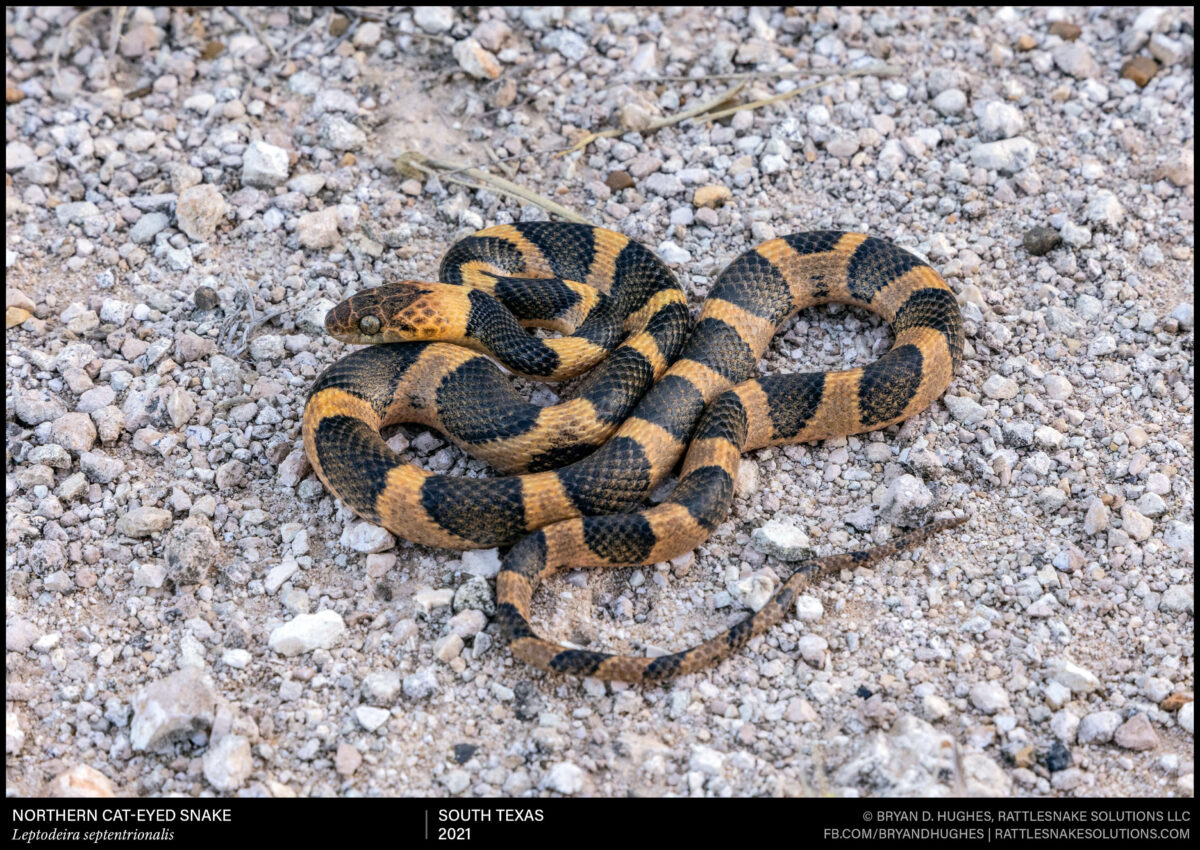
Vidal, N., Dewynter, M., & Gower, D. J. (2010). Dissecting the major American snake radiation: A molecular phylogeny of the Dipsadidae Bonaparte (Serpentes, Caenophidia). Comptes Rendus Biologies, 333(1), 48–55. https://doi.org/10.1016/j.crvi.2009.11.003
